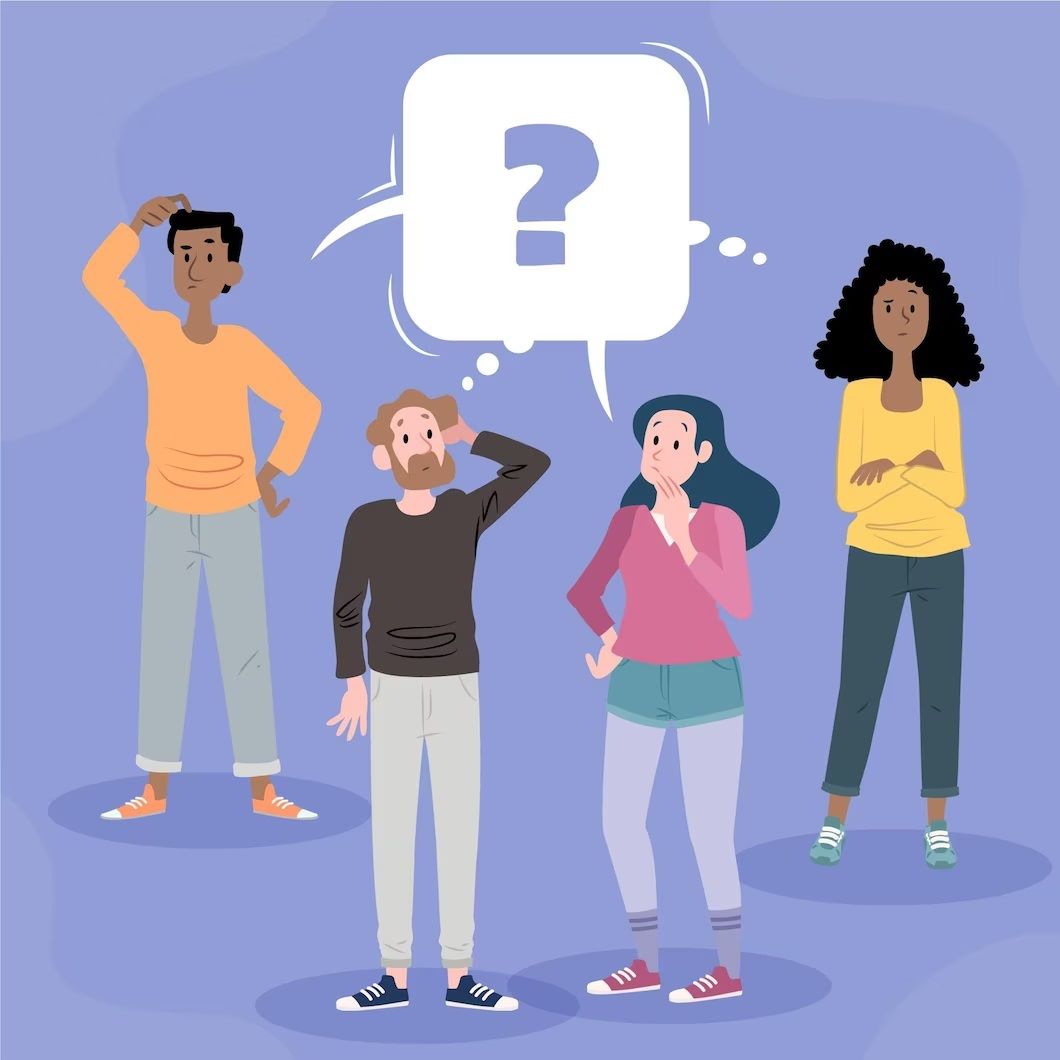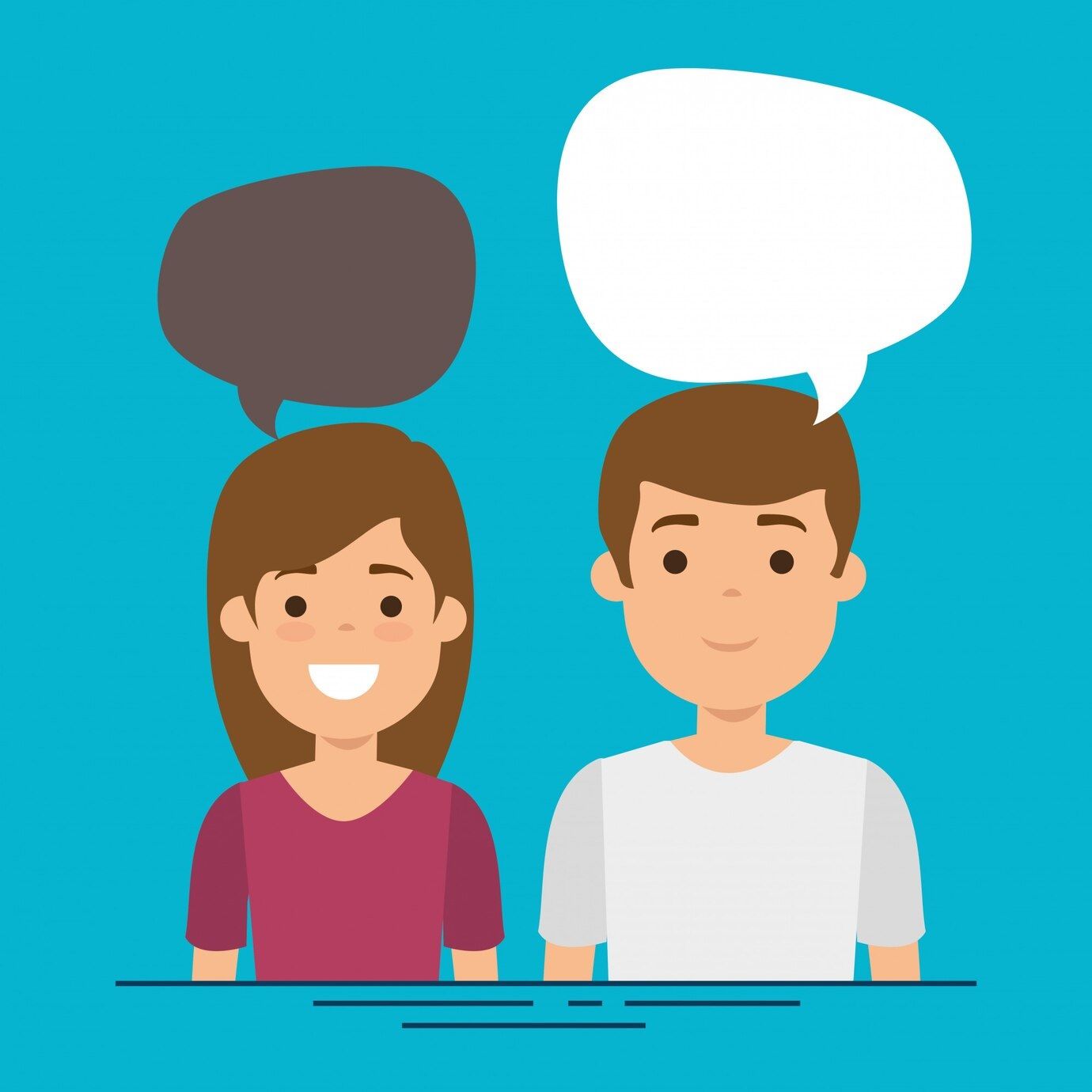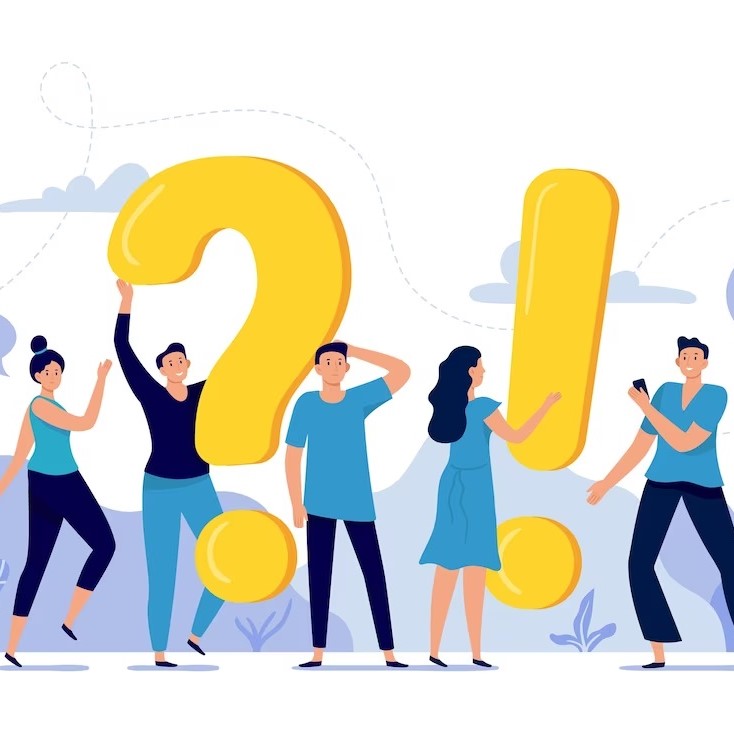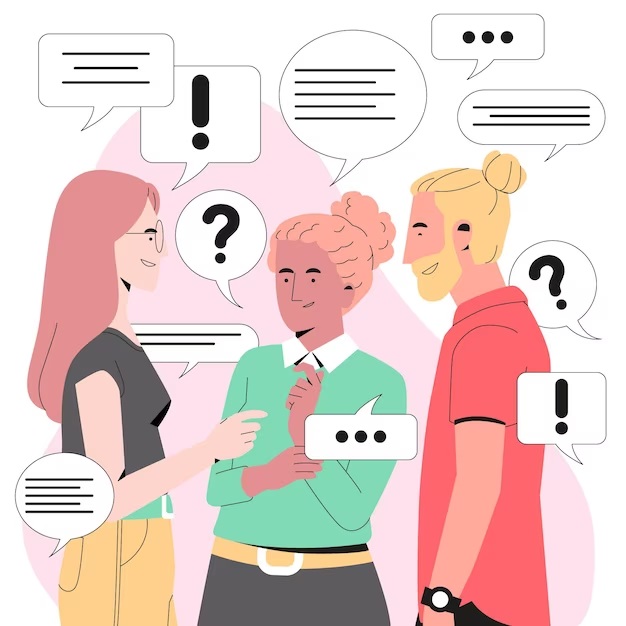Mastering the Art of Open-Ended Questions
Mastering the Art of Open-Ended Questions
Mastering the art of open-ended questions is a crucial skill for anyone looking to have meaningful conversations, build stronger relationships, or improve their leadership abilities. Open-ended questions are those that cannot be answered with a simple yes or no and require the respondent to provide more information or context. These types of questions are often used in interviews, coaching sessions, and therapeutic settings, but they can also be helpful in everyday conversations.
One of the most important aspects of asking open-ended questions is to approach the conversation with genuine curiosity and interest. This means actively listening to the other person's responses and asking follow-up questions that demonstrate your desire to learn more. It can be helpful to start with a general open-ended question, such as 'Tell me about yourself,' and then continue to ask more specific questions based on the information they provide.
Another key to mastering open-ended questions is to avoid leading or biased questions. These types of questions can unintentionally influence the response and limit the amount of information the other person is willing to share. Instead, try to ask neutral and non-judgmental questions that allow the other person to feel heard and understood. By using open-ended questions effectively, you can not only deepen your understanding of others but also build stronger connections and create more meaningful conversations in all areas of life.
What are Open-Ended Questions?
Open-ended questions are essential tools that are used to extract relevant information from interviewees or respondents in various settings, including research, journalism, and business. Generally, open-ended questions are designed to elicit more than a simple 'yes' or 'no' answer, allowing the interviewee to express themselves more fully. This is achieved by asking questions that require a detailed response or explanation, making it easier to obtain in-depth information.
The main advantage of open-ended questions is that they allow the interviewer or researcher to get a more complete and accurate picture of the individual's thoughts or views. This is because open-ended questions encourage the respondent to think creatively and critically, which often leads to new insights and perspectives. Open-ended questions are also an effective way to encourage dialogue and strengthen relationships, as they invite feedback and facilitate conversation.
One of the most challenging aspects of asking open-ended questions is wording them correctly to solicit the right response. Ideally, open-ended questions should be clear, concise, and unambiguous. They should also avoid leading or biased language, which could influence the respondent's answer. Additionally, the interviewer or researcher should be prepared to listen actively and attentively, allowing the respondent the space and time needed to express themselves clearly and effectively.
Understanding How Open-Ended Questions Work
Open-ended questions are a powerful tool for getting detailed and descriptive responses from those with whom you are communicating. These questions prompt the respondent to provide a full and complete answer rather than a simple yes or no response. Open-ended questions are ideal for gaining insight into the opinions, beliefs, experiences, and insights of others, and can be useful in a wide variety of contexts, including interviews, surveys, and focus groups. By asking open-ended questions, you can encourage others to think deeply and critically about a particular topic, and can gain valuable insights and perspectives that you might not have otherwise been able to access.
When framing open-ended questions, it is important to keep several key factors in mind. First, it is critical to use language that is clear, concise, and non-judgmental. The goal should be to create a safe and open space in which respondents feel fully comfortable sharing their thoughts and experiences. Second, questions should be framed in such a way as to give respondents ample space to expand on their answers. This might mean avoiding leading or loaded questions, such as those that suggest a particular answer, or that prioritize one perspective over another. Finally, open-ended questions should be used selectively and strategically, as part of a larger conversation or line of inquiry, rather than simply as a stand-alone tool.
Using open-ended questions effectively is both an art and a science. Whether you are conducting a formal research study or simply seeking to deepen your understanding of the perspectives and experiences of others, it is important to approach the task thoughtfully and deliberately. By taking the time to craft well-formed questions and by actively listening to the responses of others, you can expand your knowledge, challenge your assumptions, and connect more deeply with those around you. With practice and persistence, anyone can learn to use open-ended questions to great effect and can discover new and valuable insights into the world around them.
The Different Types of Open-Ended Questions
Open-ended questions are powerful tools for encouraging creativity and critical thinking. They enable conversation partners to explore a topic more fully without feeling constrained by pre-set answers. However, there are different types of open-ended questions, and each has its own unique purpose. Understanding the nuances of these types will enhance your ability to communicate effectively and build strong relationships with others.
One type of open-ended question is the exploratory question. These types of questions encourage conversation partners to delve deeper into their own thoughts and feelings about a particular topic. Example of exploratory questions include 'Why do you think that happened?', 'What was your experience like?', and 'Can you describe that further?'. These questions are designed to open up a dialogue that allows for more exploration and discussion of a particular topic.
Another type of open-ended question is the inferential question. These questions encourage conversation partners to make connections between different ideas or concepts. They often begin with phrases like 'Do you think...', 'What if...', or 'How might...'. Inferential questions can be particularly powerful because they can lead to new insights and revelations that may not have been apparent before. This type of question is useful when you want to explore different possibilities or make connections between seemingly disparate ideas.
Questions to Spark Conversation and Gain Insight
Starting a conversation can be difficult, especially if you're with people you don't know well or if you're in a new environment. One way to make it easier is by preparing some questions in advance that will help break the ice and stimulate discussion. These questions can be about anything from current events or popular culture to personal interests and experiences, and can be tailored to the interests and personalities of the people you're with. Asking open-ended questions that encourage people to share their thoughts and opinions is a great way to get to know them better and to gain insights into their perspectives on the world.
Another way to spark conversation and gain insight is by asking questions that challenge people's assumptions or push them to think more deeply about a particular topic. For example, you could ask them to explain why they hold a particular belief or to consider an alternative point of view. By encouraging people to think critically and reflect on their own ideas, you can help them broaden their perspective and gain a deeper understanding of the world around them. This type of conversation can also be more engaging and rewarding, as it encourages people to actively participate and share their own insights and experiences.
Finally, it's important to remember that conversations are a two-way street, and that listening is just as important as speaking. By actively listening to what others have to say and building on their ideas, you can create a more dynamic and engaging conversation that encourages everyone to participate. This not only helps you gain insights into the perspectives and experiences of others, but also fosters a sense of connection and community that can be a valuable source of support and inspiration in your personal and professional life. So the next time you're looking to spark conversation or gain insight, consider starting with some thought-provoking questions and an open-minded attitude towards listening and learning from others.
Questions That Probe for Details or Examples
Questions That Probe for Details or Examples are an effective way to gather information about a particular subject. These types of questions can help to clarify vague or confusing concepts, as well as provide specific details about a particular topic. When asking these types of questions, it is important to remain focused and specific to ensure that the respondent provides you with the information you need. By asking probing questions, you can gain a better understanding of complex subjects and make more informed decisions based on the information you gather.
Examples of probing questions include asking for more specific details about an event, asking for additional context about a statement, or asking for concrete examples to better illustrate a concept. Providing specific examples can help to clarify abstract concepts in a way that is more easily understood. By asking for details or examples, you can gain a deeper understanding of the reasoning behind a particular statement or decision. Probing questions can also be useful in identifying gaps in knowledge, allowing you to fill in any missing information to gain a more complete understanding of a particular subject.
When asking probing questions, it is important to approach the subject with an open mind and without any preconceived notions. Asking open-ended questions can help to encourage the respondent to provide more detailed and thoughtful responses. It is also important to actively listen to the responses that are provided so that you can follow up with appropriate additional questions. By asking questions that probe for details or examples, you can develop a deeper understanding of a particular topic, make more informed decisions, and communicate more effectively in a variety of settings.
Why Use Open-Ended Questions?
Open-ended questions are a powerful tool for gathering valuable insights and information. Unlike closed-ended questions which limit responses to predetermined choices, open-ended questions allow respondents to answer freely in their own words. This creates a more natural and authentic response, providing a richer understanding of people's opinions, attitudes, and experiences. Open-ended questions also enable respondents to express themselves more fully, revealing deeper feelings or motivations that may not be captured by a closed-ended question.
Open-ended questions are particularly effective in market research, where understanding consumer needs and preferences is critical for developing successful products and services. By asking open-ended questions, researchers can gather qualitative data that goes beyond simple demographics or quantitative metrics such as ratings or rankings. For example, open-ended questions can reveal the context in which a product is used or how consumers feel about competing products. This information can be used to create more impactful marketing campaigns or improve product design.
Open-ended questions also have a role in education and coaching. Teachers and coaches can use open-ended questions to encourage critical thinking and problem solving, as well as promote self-reflection and self-awareness. By asking open-ended questions, educators can help students explore complex ideas and make connections between different concepts. Similarly, coaches can use open-ended questions to support athletes in setting goals, identifying barriers, and exploring different strategies for improvement. Open-ended questions help both teachers and coaches build stronger relationships with their students and athletes, creating a more supportive and engaging learning environment.
Identifying the Right Time to Use Open-Ended Questions
Open-ended questions are a type of question that cannot be answered with a simple 'yes' or 'no' response. Instead, they require more thought and discussion. These types of questions are often used in interviews, surveys, and other research methods to encourage participants to provide more detailed and nuanced responses. It's important to use open-ended questions at the right time to get the most out of your research.
One effective way to use open-ended questions is in the exploration and discovery phase of a project. This is when you're trying to gather information and ideas to guide your project. Open-ended questions can help you get a better understanding of your target audience's needs, wants, and pain points. They can also help you identify potential solutions or opportunities for improvement. In this phase, it's important to avoid leading questions or questions that assume a specific answer. Instead, focus on questions that allow participants to share their experiences and perspectives without feeling restricted or influenced.
Another time to use open-ended questions is during the analysis phase. This is when you're reviewing the data and looking for patterns or themes. Open-ended questions can help you identify common threads or issues that you may have missed with closed-ended questions. They can also help you validate or challenge assumptions that you may have made about your target audience. In this phase, it's important to be consistent in your questioning and to keep an open mind. Avoid jumping to conclusions or making assumptions based on limited data. Instead, use open-ended questions to explore the data and gain a deeper understanding of your target audience.
How to Structure Open-Ended Questions
Open-ended questions can be an incredibly powerful tool in any conversation or interview. These types of questions allow for more nuanced and detailed answers from participants, as there are no specific parameters or responses. To structure an effective open-ended question, it’s important to focus on creating a clear and concise question that encourages thoughtful and detailed answers. Additionally, it’s important to consider the tone and phrasing of the question, as this can have a major impact on the respondent’s willingness to engage and the quality of their answer.
When structuring an open-ended question, it’s crucial to be specific and targeted in your questioning. Rather than asking broad or vague questions, focus on honing in on a specific topic or idea. This will not only make it easier for the participant to answer, but it will also help you extract more meaningful insights and information. Additionally, it’s important to consider the phrasing of the question to ensure that it doesn’t come across as leading or biased. By framing the question neutrally, you’ll encourage more honest and authentic answers. Overall, the key to structuring an effective open-ended question is to walk the line between specificity and neutrality.
Once you have crafted your open-ended question, it’s important to consider how you will ask the question and encourage participation from your respondents. One strategy is to start with more general questions to ease into the conversation and allow participants to get comfortable sharing information. From there, you can move into more specific questions to extract deeper insights. Additionally, it’s important to be an engaged listener throughout the conversation, asking follow-up questions and seeking clarification when necessary. By showing that you are truly interested in what the participant has to say, you’ll encourage more open and detailed answers.
Acknowledging and Responding to Open-Ended Questions
Open-ended questions are those that do not limit the response of the individual answering them. These types of questions are essential in many situations because they allow people to express their thoughts, feelings, and emotions with more freedom. Acknowledging open-ended questions can become a challenge for people in different contexts. However, the right response can make a significant difference in the overall outcome. Acknowledging open-ended questions involves listening carefully, validating the response, and remaining present during the conversation. By doing so, it creates a safe and open environment for people to share their perspectives, and it also helps people build trust and strengthen relationships.
When responding to open-ended questions, it's essential to avoid closed answers or any form of judgment, as it could hinder the flow of communication. Instead, try to respond with empathy and respect, giving the person answering the questions the opportunity to feel heard and appreciated. By doing that, you are likely to get more insight into the situation or the individual's perspective, and with this understanding, you can avoid unnecessary misunderstandings that may arise. Acknowledging and responding to open-ended questions also enables people to develop positive communication skills that they can apply in other areas of their lives, like the workplace, personal relationships, and social interactions.
Finally, technology advancements have made it easier than ever for people to communicate, but it also created new forms of communication that do not require us to respond immediately or in person, such as emails or text messages. It's therefore crucial to remember that acknowledging open-ended questions does not only entail providing a response, but it also involves making time to listen and understand the person on the other end. Whether it's on social media or a video call, the right response can go a long way to enhance the overall conversation and build lasting connections with others.
The Benefits of Mastering Open-Ended Questions
Mastering the art of asking open-ended questions is not only beneficial in personal relationships but also in the professional world. Open-ended questions encourage people to express their opinions, feelings, and experiences, leading to a better understanding of them. In the workplace, asking open-ended questions can help teams to collaborate more effectively, problem-solve, and come up with creative solutions. By creating an environment where people feel comfortable sharing their thoughts and ideas, businesses can foster a culture of innovation and growth.
Asking open-ended questions also demonstrates active listening skills and shows genuine interest in others. When people feel heard and valued, it can increase their engagement and motivation in the workplace. Additionally, open-ended questions are a powerful tool in conflict resolution. By asking open-ended questions, people can gain a better understanding of the other person's perspective and work towards finding a mutually beneficial solution. By communicating effectively through open-ended questions, teams can build stronger relationships and work together more productively.
Lastly, mastering open-ended questions can be personally rewarding. By asking open-ended questions, individuals can gain a deeper understanding of themselves and their own thoughts and feelings. It can help them to reflect on their own experiences and improve their self-awareness. Additionally, asking open-ended questions can lead to more meaningful conversations and connections with others. By encouraging others to share their stories and experiences, individuals can learn from each other and develop a greater sense of empathy and understanding. Overall, mastering the skill of asking open-ended questions can have numerous benefits both professionally and personally.
Common Pitfalls to Avoid When Using Open-Ended Questions
Open-ended questions are incredibly useful in gaining more insight into someone's thoughts, experiences, and emotions. However, there are common pitfalls that many people fall into when using them. One common mistake is asking leading questions that may suggest a particular answer, which can influence the response. Another pitfall is asking too many questions at once, which can overwhelm the respondent and lead to superficial answers. Finally, it's important to avoid using overly technical language or industry-specific jargon that may confuse or alienate the person being questioned.
One way to avoid these pitfalls is to be mindful of the phrasing of your questions. Instead of asking leading questions, try to keep your questions neutral and open-ended. For example, instead of asking, 'Do you believe that eating meat is cruel?' try asking, 'What are your thoughts on eating meat?' This will encourage a more honest and unbiased response. Additionally, don't ask too many questions at once. Instead, focus on one or two key questions that will yield the most useful information.
Finally, it's essential to be aware of who you're questioning and the language you use. If you're asking open-ended questions to someone who is not familiar with your industry or field, avoid using technical jargon that they might not understand. Instead, use plain language that is accessible to everyone. Also, make sure to listen carefully to the responses you receive and ask follow-up questions if needed. This will help you gain a deeper understanding of the person's thoughts and experiences, and ultimately gain better insights from your open-ended questions.
Getting Started: Ways to Practice Exploring with Open-Ended Questions
Exploring with open-ended questions is a fantastic way to stimulate curiosity and invite critical thinking in individuals of all ages. These questions are designed to encourage free-form responses that elicit unique perspectives and solutions. They do not have a single correct answer, which promotes open-mindedness and creativity. This is why they are so valuable in a variety of contexts - from the classroom to the boardroom. They allow people to examine their beliefs, articulate their thoughts, and engage in a thought-provoking discussion.
Starting with simple open-ended questions is a great way to cultivate curiosity and creativity. Basic questions that you might ask include 'What do you think about this?', 'What do you see?', or 'How do you feel about that?'. These questions are open-ended because they do not have a simple yes or no answer. Encouraging others to elaborate on their thoughts and feelings by asking probing follow-up questions is also an effective way to explore new areas of interest and challenge individuals to think more deeply. Furthermore, by creating an open and safe environment for exploring ideas and feelings, people will be more willing to express themselves and share their experiences.
Another way to practice exploring with open-ended questions is through games and activities. These often involve group participation and encourage all players to think creatively and develop unique perspectives. Examples of games that inspire curiosity and critical thinking include telling a story where each participant adds a sentence or asking participants to brainstorm different ideas about how to solve a problem. Not only do these activities promote an understanding of new concepts and ideas, they also strengthen communication skills, build trust and make for an enjoyable experience. By incorporating open-ended questions into games and activities, we can help foster an environment of lifelong learning and intellectual growth.



